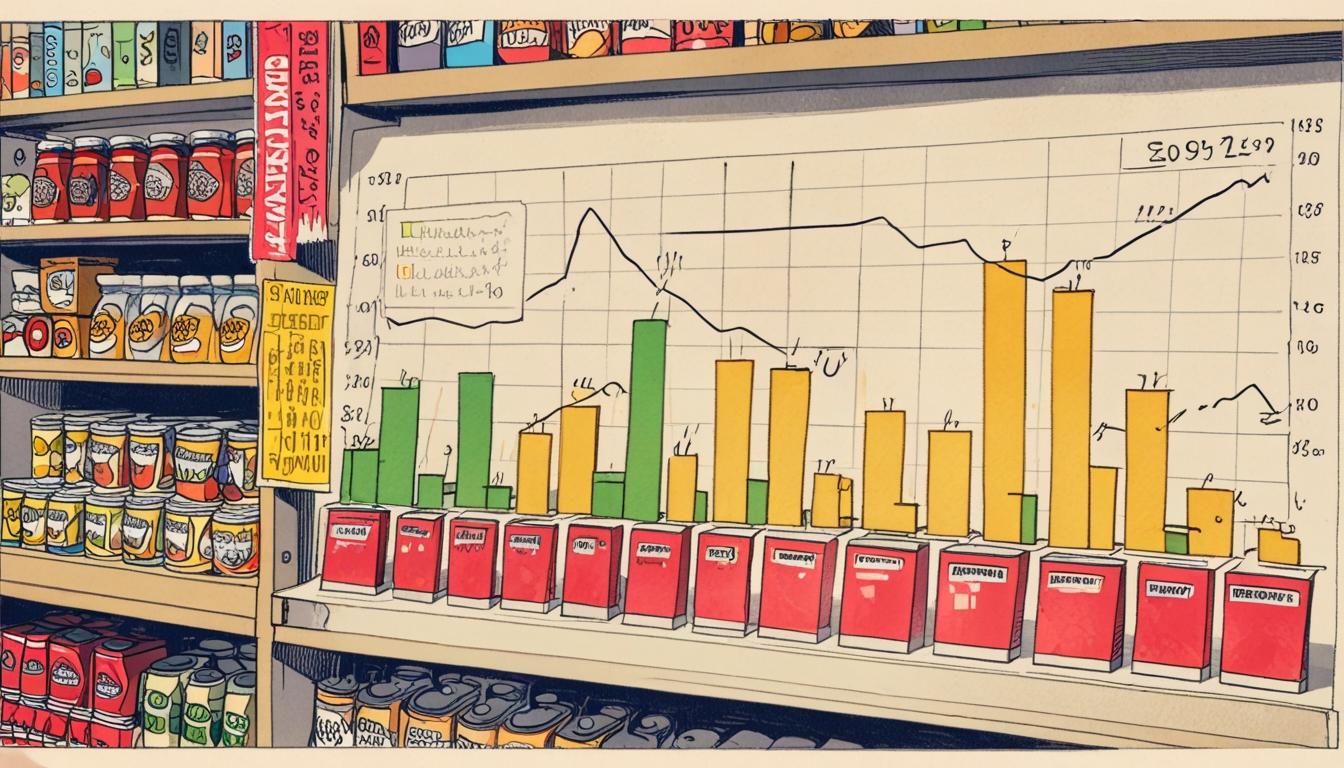Kraft Heinz has revised downward its 2025 financial outlook across multiple key performance indicators, citing potential increases in input-cost inflation due to tariffs and other market pressures. The company reported disappointing first-quarter results that reflect a challenging consumer environment, leading to adjustments in organic growth, adjusted operating income, and adjusted earnings per share (EPS) projections.
In its updated guidance, Kraft Heinz now expects organic sales to decline by 1.5% to 3.5%, a shift from the previous forecast of flat to down 2.5%. The adjusted EPS forecast has been lowered to a range of $2.51 to $2.67, compared with the earlier range of $2.63 to $2.74. This revision comes after an EPS increase of 2.7% to $3.06 for the 2024 fiscal year. Notably, the constant currency adjusted operating income outlook has been cut significantly to a minus 5-10% decline, a deeper reduction from the initial forecast of a 1-4% contraction.
CEO Carlos Abrams-Rivera attributed these revisions to the ongoing monitoring of inflation and tariff impacts, stating: “Our revised outlook contemplates incremental costs from inflation, including the impact of tariffs and new regulations, as well as the impact on elasticities,” during his remarks on 29 April. Kraft Heinz is factoring in an additional 150 to 200 basis points of input-cost inflation above the approximately 3% anticipated at the beginning of the year. Elevated coffee prices have further contributed to cost pressures.
On a call with analysts, CFO Andre Maciel explained that the broader range in operating income forecast reflects the uncertainties tied to volatile macroeconomic conditions and evolving policy landscapes. He said, “The wider range reflects a larger degree of uncertainty given the underlying volatility and unpredictability of macro-economic dynamics, as well as a changing policy landscape. It also provides us with the necessary flexibility to dial-in on investments as deemed appropriate.” He added that the downward adjustment in organic sales guidance was “primarily driven by worsening consumer sentiment and changes in volume elasticity.”
Kraft Heinz's first-quarter performance mirrored these challenges. For the three months ending 29 March, group net sales fell 6.4% on a reported basis and 4.7% in organic terms, just under $7 billion. In the North America division—the company’s largest—sales dropped 7% reported and 6.5% organically to $4.49 billion, with volume/mix down 7.1% offset slightly by a 0.6% pricing increase. The international business experienced sales declines of 4.4% reported and 1.7% organic to $817 million, with a volume/mix decrease of 1.5% and a minor price decrease of 0.2%. Emerging markets stood out with an organic sales growth of 3.9%, although reported sales declined by 4.7%, reflecting a slight volume/mix drop alongside a price increase of 4.3%.
Margins also came under pressure, with gross margins slipping 60 basis points on a reported basis to 34.4%, and 10 points on an adjusted basis. Maciel projected that for the full year, adjusted gross margins could decline by 25 to 75 basis points compared with 2024, driven by inflation and added investments, despite ongoing gross efficiency and tariff mitigation efforts.
In response to these market dynamics, Kraft Heinz plans to increase its media spending, anticipating that marketing expenses as a percentage of sales will grow by at least 15% compared to 2024. The company also intends to emphasise product innovation, reformulation, and productivity improvements to manage pricing pressures. Maciel noted, “We are trying to do everything we possibly can to minimise the amount of price necessary.”
Furthermore, Kraft Heinz will continue to roll out its brand growth system—a strategic framework initiated by CEO Abrams-Rivera aimed at driving superior brand performance through product and packaging enhancements as well as targeted communications. Abrams-Rivera explained, “The brand growth system is our repeatable global model for understanding how we see opportunities within our brands, and how do we make sure we drive superiority on those brands through both products and packaging and making sure that every communication has the right brand resonance value equation and on the execution.” The programme, which was piloted at 10% of product sales in 2024, is set to expand to cover 40% in 2025.
The system focuses resources on key Kraft Heinz brands facing notable headwinds, including Lunchables, Capri Sun, Kraft Mac & Cheese, and Kraft Mayonnaise, which the company has identified as areas requiring top-line improvement.
The Just Food publication is reporting on these developments, highlighting the combination of tariff-related inflation, consumer sentiment shifts, and strategic adjustments shaping Kraft Heinz’s outlook and operational priorities.
Source: Noah Wire Services
